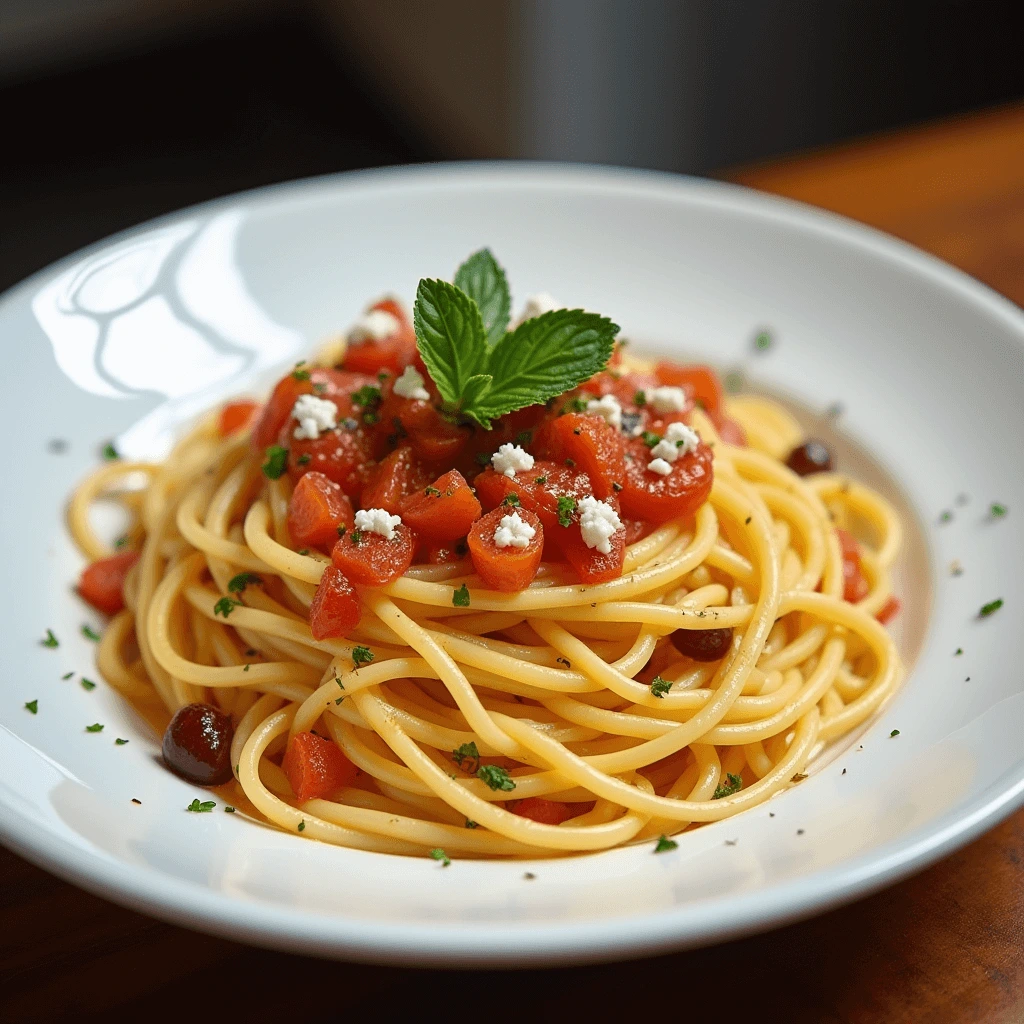Making great spaghetti isn’t just about boiling noodles and pouring on sauce—there’s an art to getting it just right. Whether you’re cooking for yourself, your family, or guests, a few simple techniques can elevate your dish from average to amazing. In this section, we’ll cover expert tips and tricks to help you achieve perfect spaghetti every time—from cooking the pasta al dente to building flavor with simple ingredients and mastering the final presentation. Whether you’re a beginner or a seasoned home cook, these spaghetti secrets will take your pasta game to the next level.
Expert Tips and Tricks for Spaghetti Success
Expert Tips and Tricks for Spaghetti Success: What Italian Chefs Say About Cooking Perfect Spaghetti
How to save and reheat spaghetti without losing flavor
Leftover spaghetti can be just as delicious the next day—if you know how to store and reheat it properly. With the right techniques, you can preserve the flavor, texture, and quality of your dish instead of ending up with soggy noodles or bland sauce.
Storing Leftover Spaghetti the Right Way
To keep spaghetti fresh, proper storage is key. Here’s how to do it:
- Separate the pasta and sauce (if possible): Storing them separately prevents the noodles from absorbing too much sauce and becoming mushy.
- Use airtight containers: This keeps moisture in and air out, preserving both flavor and freshness.
- Cool it quickly: Let the spaghetti cool to room temperature, but don’t leave it out for more than 2 hours to avoid bacterial growth.
- Label and date: Leftovers are best eaten within 3–4 days when refrigerated. If freezing, use within 1–2 months for best taste.
Reheating Methods That Work Best
Avoid the microwave mush! These reheating techniques help retain the original flavor and texture:
- Microwave (for speed): Add a splash of water or sauce to prevent drying out. Cover loosely and heat in short intervals, stirring halfway through.
- Stovetop (for better control): Warm sauce in a pan, then toss in the spaghetti with a bit of olive oil or water. Heat over low-medium heat while stirring.
- Oven (for baked leftovers): Preheat to 350°F (175°C), place spaghetti in an oven-safe dish, cover with foil, and bake for about 15–20 minutes.
Extra Flavor Boost Tips
- Fresh herbs or cheese: Sprinkle some basil, parsley, or Parmesan right before serving to revive freshness.
- Add a drizzle of olive oil or a spoonful of sauce: This helps rehydrate dry noodles and revives flavor.
- Don’t overheat: Heat just until warm—overcooking during reheating can ruin the texture.
Using pasta water to improve sauce texture and consistency
One of the best-kept secrets of Italian cooking isn’t an expensive ingredient—it’s the starchy pasta water you’re probably pouring down the drain. This humble liquid is a powerful tool for transforming your spaghetti sauce from basic to beautifully balanced. Here’s how and why to use it.
Why Pasta Water Works
When pasta cooks, it releases starch into the boiling water. This starch-rich water becomes a natural thickener and emulsifier, helping your sauce cling better to the noodles and creating a silky, cohesive texture.
- Enhances sauce consistency: It helps thin out thick sauces without watering them down.
- Improves binding: The starch helps the sauce and pasta stick together instead of separating.
- Adds a subtle savory flavor: Salted pasta water gently enhances the overall taste of the dish.
How to Save and Use Pasta Water
Before draining your pasta, reserve about 1 cup of the cooking water. You can always use less, but it’s good to have extra on hand.
- Add it gradually: Stir in a few tablespoons at a time while mixing the pasta and sauce together.
- Toss it in the pan: For best results, combine your cooked pasta and sauce in a pan over low heat, then slowly add pasta water to achieve your desired texture.
- Use it right away: Pasta water is most effective when it’s hot and fresh—don’t let it sit too long.
Works with All Types of Sauces
Whether you’re making a marinara, creamy Alfredo, pesto, or even carbonara, pasta water enhances them all:
- Tomato-based sauces get smoother and more integrated.
- Creamy sauces gain a silkier finish.
- Oil-based sauces (like aglio e olio) cling to noodles more evenly.
Pro Tip
For an ultra-luxurious finish, use tongs to transfer the pasta directly from the pot to the sauce pan without draining. This technique brings some pasta water with it and ensures a seamless blend.
Insider tips from chefs and food bloggers on making spaghetti shine
While anyone can cook spaghetti, making it truly shine takes expert insight. Chefs and seasoned food bloggers have mastered the little things that elevate a simple pasta dish into something memorable. From ingredient selection to presentation, their tips can take your spaghetti dinners to the next level.
Start with Quality Ingredients
According to many chefs, great spaghetti starts with high-quality base ingredients. That means:
- Durum wheat pasta with a rough texture that holds sauce well.
- Cold-pressed extra virgin olive oil for richness and depth.
- Fresh garlic, basil, and ripe tomatoes—the fresher the ingredients, the better the final taste.
👉 Chef Nancy Silverton recommends shopping at farmers’ markets for herbs and produce to get the most vibrant flavors.
Build Flavor in Layers
Food bloggers often emphasize layering flavors instead of just mixing everything together at the end:
- Toast your garlic lightly in olive oil before adding tomatoes or sauce.
- Deglaze your pan with a splash of white wine or pasta water to scrape up flavorful bits.
- Simmer sauces slowly to bring out depth and complexity—especially with bolognese or marinara.
👉 Food blogger Ali from Gimme Some Oven suggests adding a pinch of red pepper flakes early in cooking to subtly boost flavor.
Don’t Forget Presentation
Chefs agree: how your spaghetti looks on the plate is almost as important as how it tastes. Simple tips like:
- Twirl pasta into neat nests using tongs for restaurant-style plating.
- Garnish with fresh herbs, a drizzle of olive oil, or shaved Parmesan.
- Use shallow white plates to make the colors and textures pop.
👉 Influencer Minimalist Baker recommends finishing dishes with lemon zest for brightness and visual appeal.
Finish Cooking Pasta in the Sauce
This pro tip comes up again and again: finish cooking your pasta in the sauce for the last 1–2 minutes. This allows the noodles to soak up flavor and helps the sauce bind properly. It also keeps the pasta from being overcooked.
Taste and Adjust
Professional cooks taste constantly. Before serving, always check:
- Salt and acidity balance
- Sauce thickness
- Texture of the pasta
Don’t be afraid to tweak—add a splash of reserved pasta water, a dash of pepper, or a pinch more salt if needed.
Creating the perfect spaghetti dinner doesn’t require professional training—just the right knowledge and a little practice. From choosing quality ingredients and mastering cooking techniques to enhancing sauces and reheating leftovers properly, every step plays a role in building flavor and texture. By following these expert tips and tricks, your spaghetti meals will go from ordinary to unforgettable.
Whether you’re cooking for a busy weeknight or a special occasion, these spaghetti dinner tips will ensure your dish is satisfying, flavorful, and impressive every time. So grab your favorite noodles, fire up the stove, and let your next spaghetti night be your best one yet!

